Act as a native French speaker and an expert in travel, who speaks and writes fluently in French. Translate the article below into French. Make sure the translation is linguistically accurate, and conveying the meaning, facts and figures of the original text. Ensure the content is engaging and culturally appropriate for French readers. Don’t talk about Yourself or Your Experience. Don’t Self-reference. Don’t explain what you are doing. The article to translate:
Immerse yourself in Japanese history and art while exploring some of the country’s most sacred buildings.
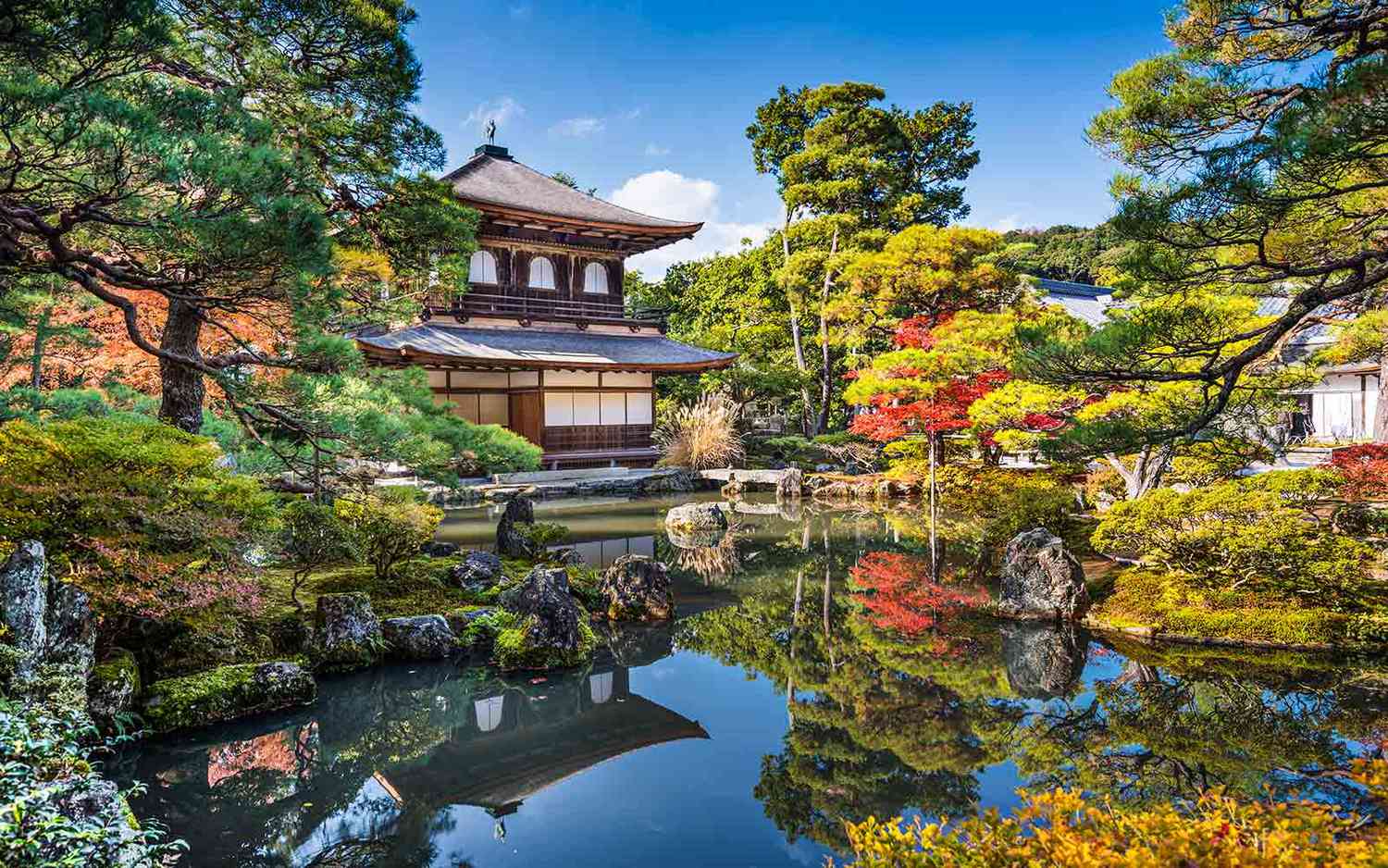
SeanPavonePhoto / Getty Images
In Japan, temples are not only buildings of worship filled with ancient and sacred objects but places where you can connect with history. Some of the world’s oldest structures are enhanced in beauty by the immaculate gardens and cherry blossom groves that are meticulously cared for around each temple complex. A Japanese temple is a place where locals and visitors alike gather to find a moment of zen and follow in the footsteps of shoguns, emperors, artists, and philosophers who were dedicated to making each temple as beautiful as possible.
Top 5 Can’t Miss
- Admire the shimmering gold-covered tiers of the pavilion at Kyoto’s Kinkaku-ji Temple.
- Marvel at Kōtoku-in Temple’s 800-year-old Buddha statue in the seaside town of Kamakura.
- Explore the mountainside trails of the enormous Daigo-ji Temple complex in Kyoto.
- Visit the world’s oldest wooden building at Hōryū-ji Temple in Ikaruga.
- See the iconic Byodo-in Temple of Kyoto which appears on Japanese currency.
These are some of the most stunning temples to visit in Japan.
Kinkaku-ji Temple, Kyoto
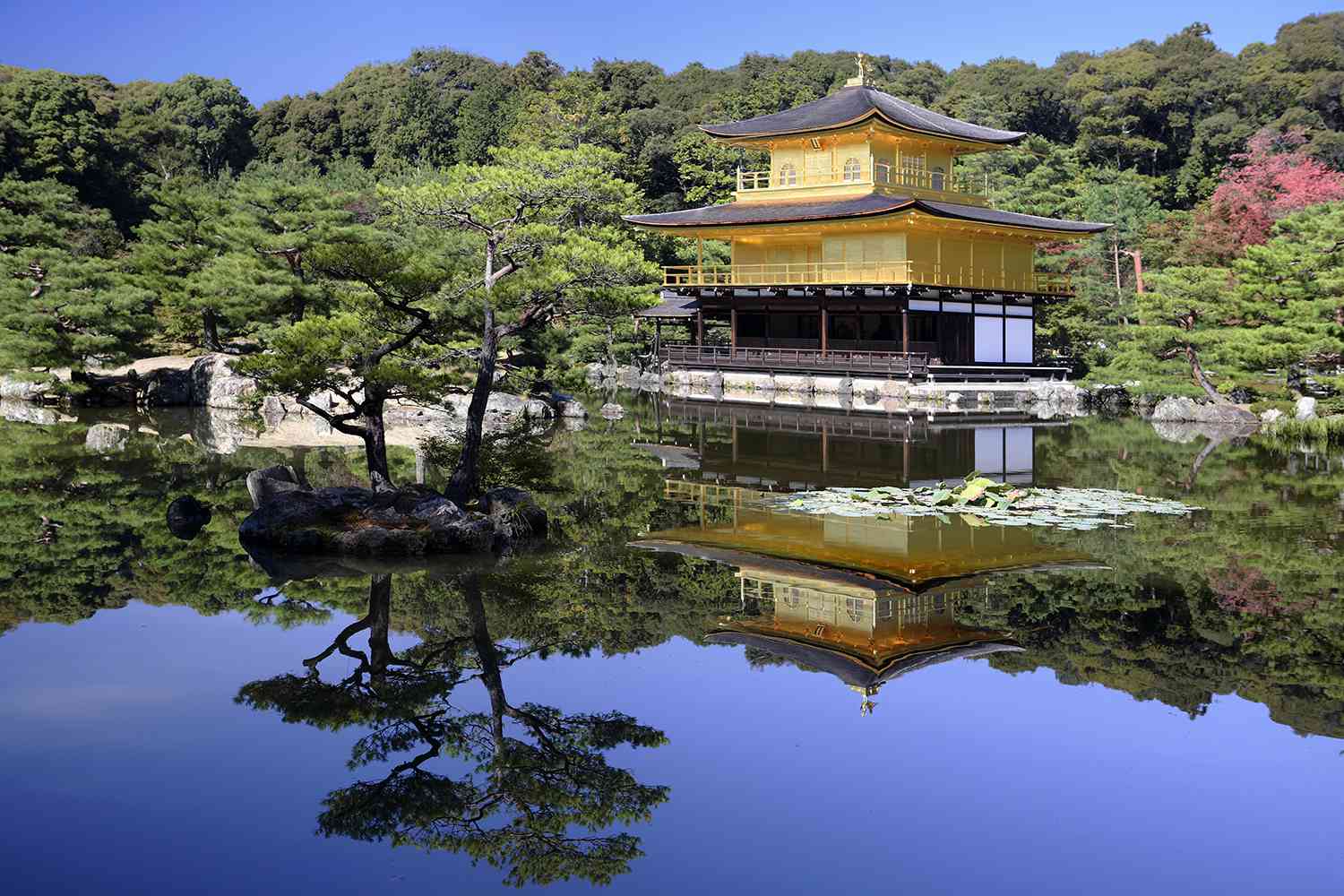
Planet One Images / Getty Images
It would be hard to find a more stunning temple than Kinkaku-ji. The show-stealing attraction is the Golden Pavillion with its gold-leaf covered facade positioned next to a reflecting pool. Each tier of the three-story temple represents a different architectural style and although the interior houses many statues, visitors are not allowed inside so you will have to make peace with only looking at it from across the water.
Kōtoku-in Temple, Kamakura
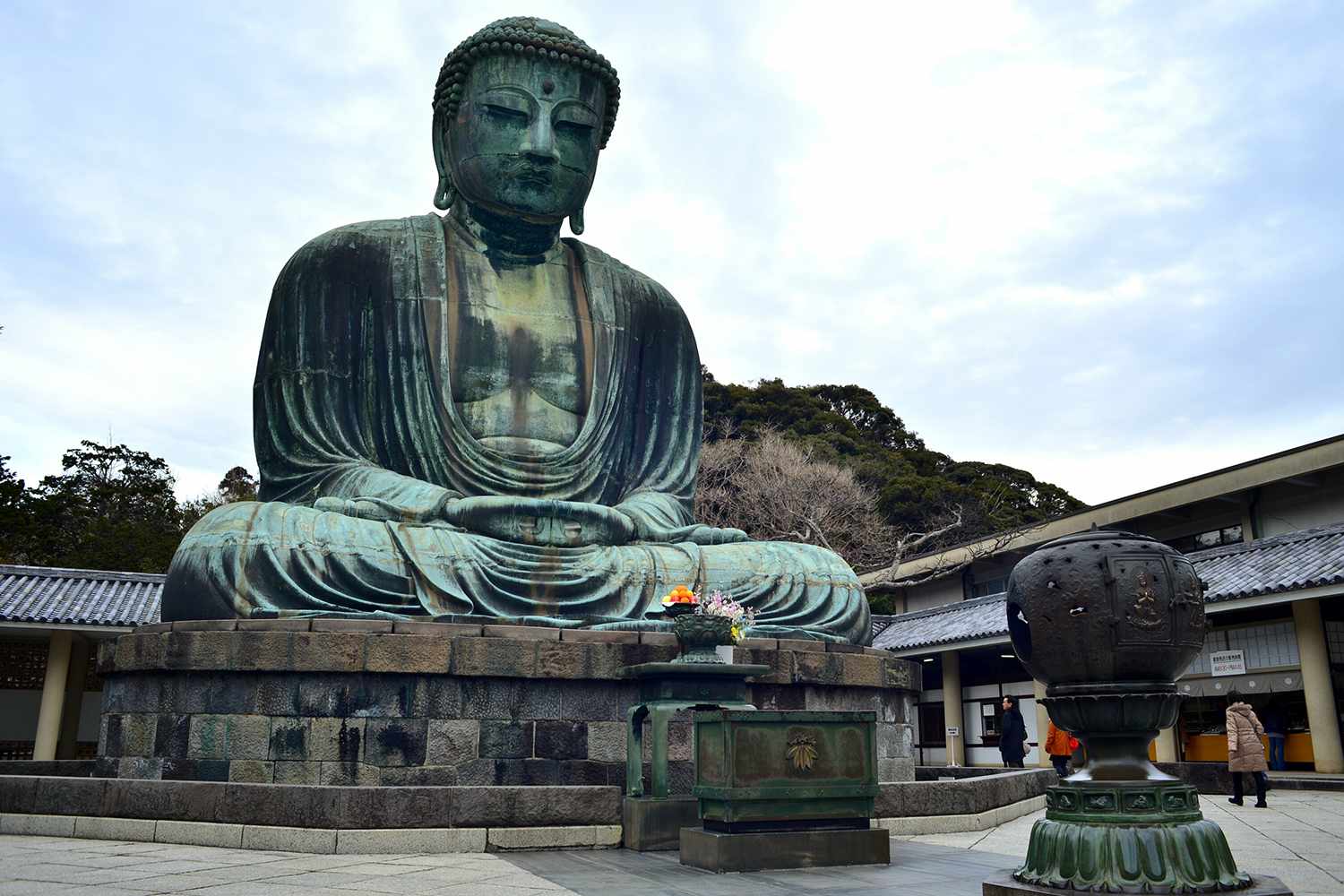
Tiradae Manyum / EyeEm / Getty Images
Located in the coastal city of Kamakura in the Kanagawa Prefecture of Japan, Kōtoku-in is widely known for its Great Buddha, a 37-meter tall bronze statue that greets those who visit the sacred space. No one knows exactly how old the statue is, but many say it dates to at least 1252. The Great Buddha was preceded by a wooden monument of the same grandeur that took 10 years of constant labor to complete — the landmark you see today took its place after the original was damaged during a storm in 1248. Behind the Buddha, Kangetsudo Hall also has a unique architectural history having been originally built in Korea in the 15th century, and transported to Kamakura in 1924.
Daigo-ji Temple, Kyoto

Peter Adams / Getty Images
The perfect temple for avid hikers, Daigo-ji is made up of three different structures: Sanboin, Shimo-Daigo (Lower Daigo), and Kami-Daigo (Upper Daigo). The third section is located at the top of the area’s mountain and is only accessible by a strenuous hike. In the lower Daigo, you’ll find the oldest confirmed building in Kyoto which was built in the 10th century, surviving the many fires which damaged other buildings. If you want to climb up to the Upper Daigo, give yourself at least an hour to complete the steep but rewarding hike.
Hōryū-ji Temple, Ikaruga
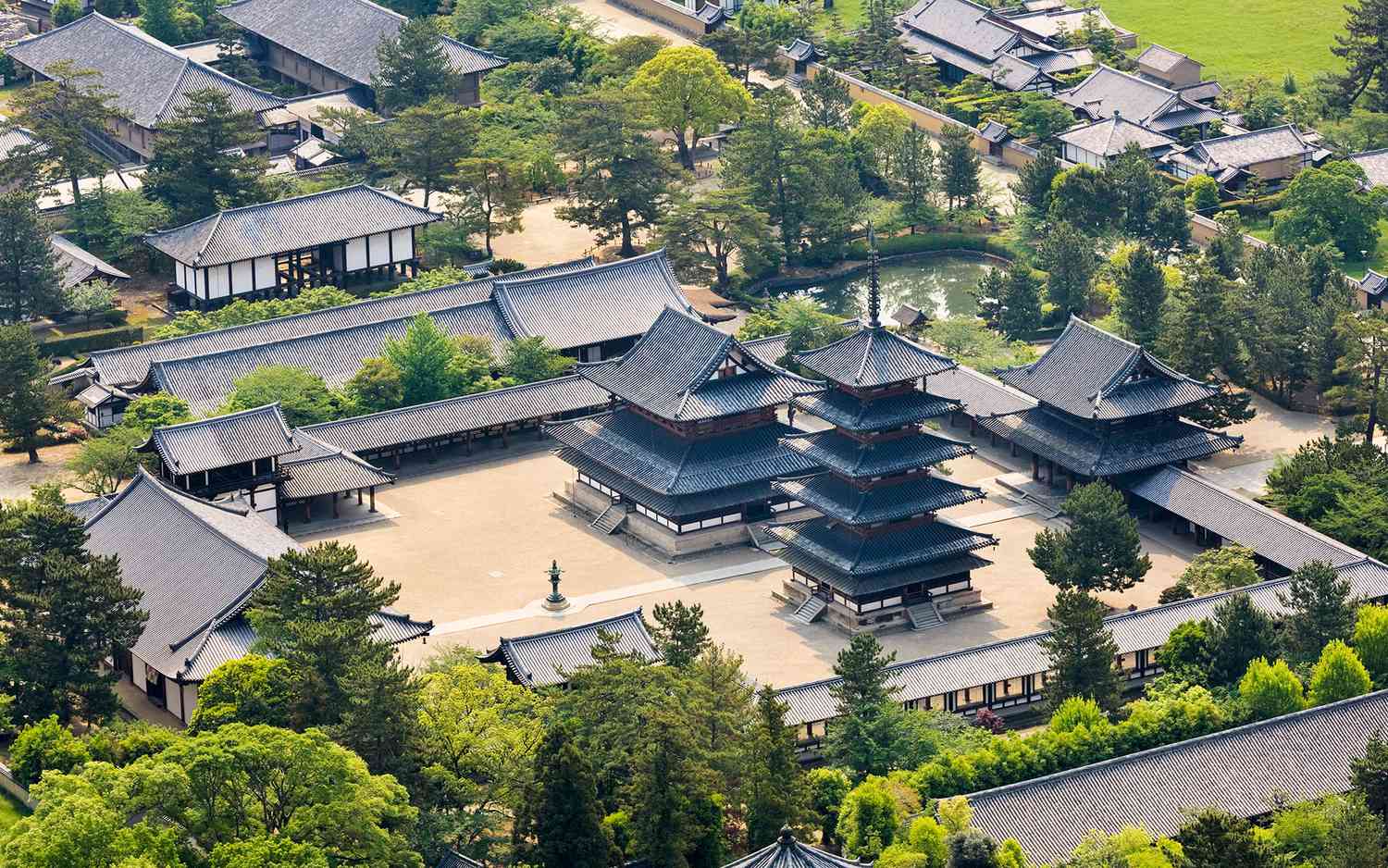
Shashinkoubou / Getty Images
Translating to mean “Temple of the Flourishing Law,” Hōryū-ji is a seminary and a monastery. The temple’s pagoda is regarded as one of the oldest surviving wooden structures in the world, built around a cypress tree cut down over a thousand years ago in 594. In the same complex, you also have the bona fide oldest surviving wooden building in the world the Kondo Hall. This temple is one of the most important in Japan, so much so that it was the very first place in the country to be recognized by UNESCO in 1993.
Byodo-in Temple, Kyoto

Sean Pavone Photo/Getty Images
One of the most famous temples in Japan, Byodo-in appears on on the 10 yen coin. The 11th-century temple was originally a villa belonging to the powerful Fujiwara clan and is picturesque in every way. The reflecting pool creates the illusion that it is floating above the Earth and the main hall, filled with Buddhas sculpted into lively and charming poses, is inspired by the idea of recreating the Buddha’s palace in paradise. Its image is so popular that there is even a replica of this temple on the Hawaiian island of Oahu.
Kiyomizu-dera Temple, Kyoto

For worshippers, Kiyomizu-dera — which translates to “Pure Water Temple” — is the home of Kannon Bodhisattva, the Goddess of Mercy, a Buddhist symbol that’s been around for more than 1,200 years. Its most famous feature is the wooden terrace, or wooden stage, that extends from the top of the temple’s main hall offering the best view of cherry blossoms (when they are in bloom) and the distant mountains. This is just one place to stop in the 50-square-mile temple complex though, which has multiple shrines and gardens.
Ginkaku-ji Temple, Kyoto
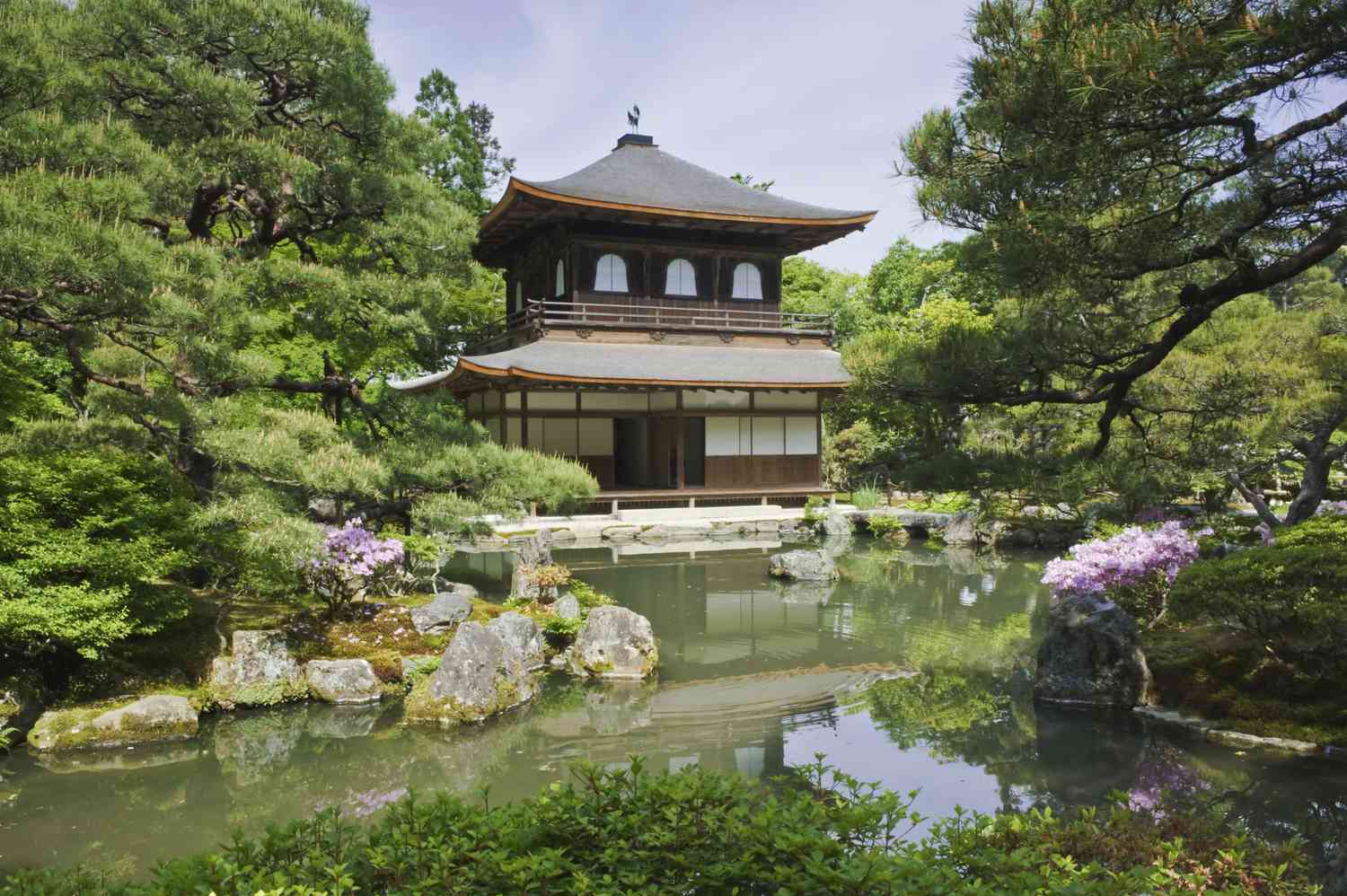
Danita Delimont / Getty Images
Ginkaku-ji, located in Kyoto’s eastern mountain region, was actually the shogun’s villa before becoming a temple in 1490. Ashikaga Yoshimasa built the Silver Pavilion in 1482, intending to mimic his great-grandfather’s Golden Pavilion, also known as Kinkaku-ji Temple. However, unlike the earlier gold-adorned temple, this building is not covered in silver. One of the temple’s main attractions is a dry sand garden with a cone-shaped sculpture known as the “moon-viewing platform,” which some say resembles Mount Fuji.
Sanjusangendo Temple, Kyoto
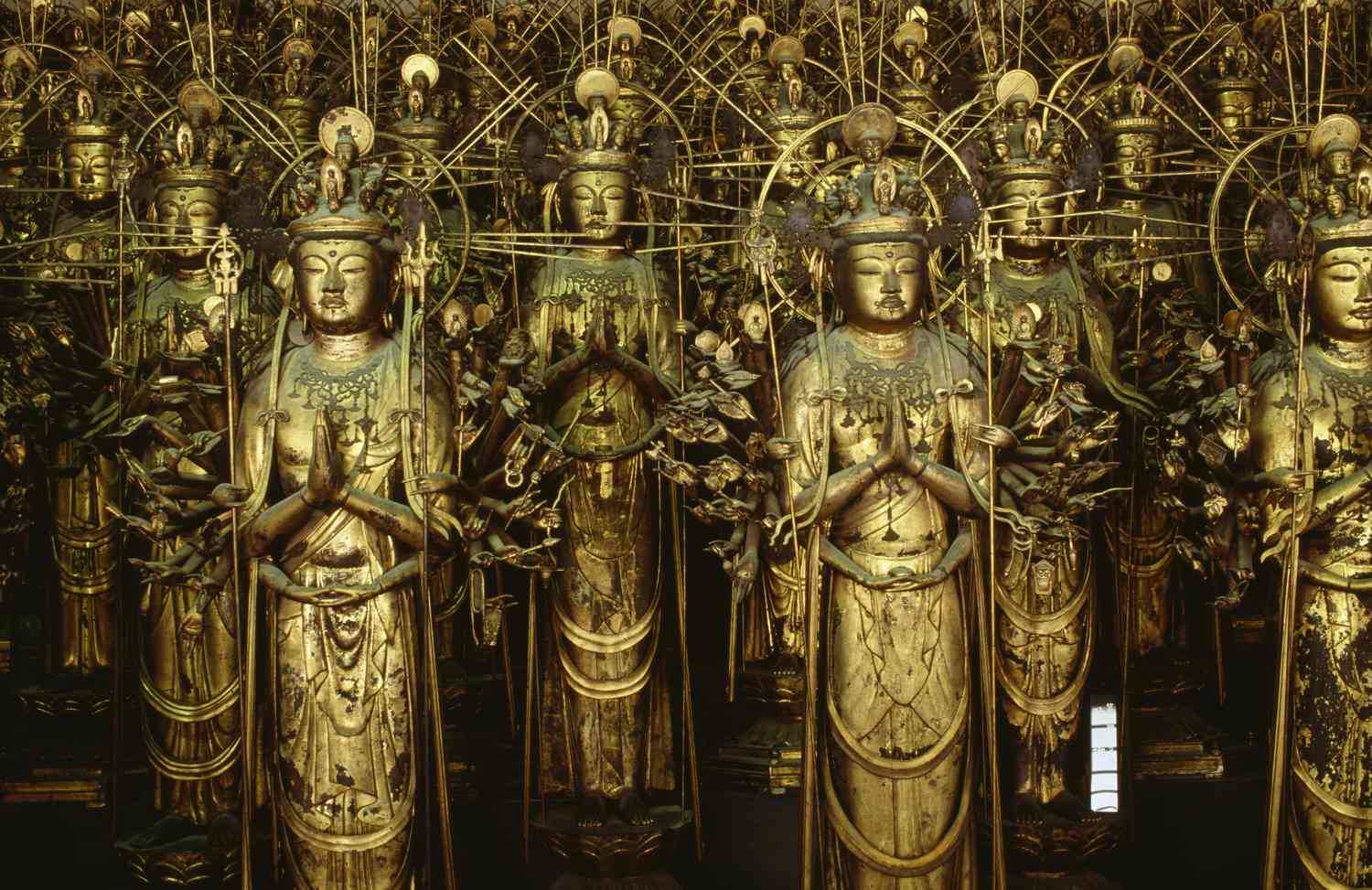
Christophe Boisvieux/Getty Images
Sanjusangendo in Eastern Kyoto is mostly known for its collection of 1,001 statues of Kannon, the goddess of mercy. The temple was originally founded in 1164, but rebuilt in 1264 after a fire destroyed the original structure. At the center of the large hall, there is one 1,000-armed Kannon statue with 11 heads. Outside the statuary, the temple’s gardens are filled with sacred willow trees which are used in purification rituals.
Yakushi-ji Temple, Nara

Like Kiyomizu-dera, Yakushi-ji is a UNESCO World Heritage Site under the title “Historic Monuments of Ancient Nara.” In 680, an emperor built the temple for his ailing wife and today it’s main attraction is the Medicine Buddha, who people pray to for good health. Although the pagoda appears to have six tiers, it is actually an optical illusion because the structure is only three stories high.
Tōdai-ji Temple, Nara

Sura Ark / Getty Images
Tōdai-ji, which has been around since 728, has seen its fair share of trauma since opening as a training center for Buddhist monks. Inside one of the longest wooden buildings in the world, the focal point of the temple is the Diabutsu, a giant bronze Buddha built in 752. While walking around the temple, keep your eye out for a pillar with a small hole in it. They say those who are able to pass through the hole will achieve enlightenment in their next lifetime.
Ryōan-ji Temple, Kyoto

Located in northwest Kyoto, this temple boasts one of the most famous rock gardens in the world. Ryōan-ji Temple, which translates to “The Temple of the Dragon at Peace,” was originally built as a villa but was then transformed into a temple in the 15th century. The simple arrangement of the garden’s 15 stones has inspired many ideas about what it might represent. The rocks are also arranged in such a way that no matter where you stand in the garden, one rock will always be hidden from view. When the garden was created and who designed it remains a mystery.
Ninna-ji Temple, Kyoto

Volanthevist / Getty Images
Built in 888, the Ninna-ji Temple is part Buddhist temple and part imperial Palace. It was primarily used by Buddhist priests that came from noble backgrounds, including Emperor Uda who resided here as it’s first chief priest. They lived in a part of the complex known as the Goten, which are a series of beaufiul buildings surrounded by ponds and gardens. This site is also famous for its Omuru cherry trees which always bloom towards the end of cherry blossom season.
Takkoku no Iwaya Temple, Hiraizumi

John S Lander / Getty Images
Takkoku-no-Iwaya is one of the many temples and sacred locations in Hiraizumi, that give this city UNESCO World Heritage status. However, this one is particularly unique because it was constructed against the wall of a cliff. Dedicated to the Japanese god of battle, Bishamon, the temple was built in the 9th century to commemorate a victory of the Yamato people over the indigenous Emishi tribes.
Tō-ji Temple, Kyoto

Dea / W. Buss / Getty Images
The five-story pagoda of the Tō-ji Temple pavilion is the tallest wooden tower in Japan, measuring nearly 180 feet tall. Built in the 8th century, it dates back to the early days of Kyoto’s role as capital. In the complex, you’ll find many centuries-old buildings like Kondo and Kodo Hall which house various Buddha statues. If your timing is lucky, you may stumble across one of the monthly markets that take place on the grounds, such as the antique fair on the first Sunday of the month and a general flea market every 21st.
Tenryū-ji Temple, Kyoto

Ritchie Linao / Getty Images
Tenryū-ji, located near the western outskirts of Kyoto, was a much larger complex when it was built in the 14th century. Formerly made up of hundreds of temples, many of which were lost over the course of eight separate fires, there are only a few left and Tenryū-ji is one-tenth as large as its original size. However, its garden has proved more resilient and is one of the foremost examples of a traditional Japanese garden, designed by the master gardener Muso Soseki.
Sensō-ji Temple, Tokyo

Hemis.fr RM / Getty Images
Sensō-ji is Tokyo’s oldest temple, dating back to 645, and is located in Asakusa. Legend has it that two local fishermen found a statue of Kannon in the nearby Sumida River in 628. After showing it to the chief of their village, he remodeled his own home into a small temple to enshrine the statue for city-wide worshipping. Visitors enter the temple through the Thunder Gate, or Kaminarimon, passing the enormous red lantern that weighs over 1,500 pounds.
Nanzen-ji Temple, Kyoto

Travel and Still Life Photography / Getty Images
Located at the base of Kyoto’s mountains, the 13th-century, Nanzen-ji Temple is another one of Kyoto’s temples that was originally conceived as a retirement villa for the emperor. There are many traditional Japanese sights here like the Hojo rock garden and the towering Sanmon gate, but one of the most unexpected things is the brick aqueduct built in the 19th century.

